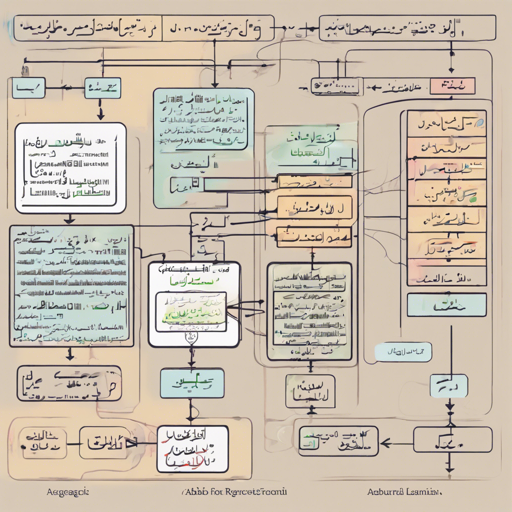In today’s world, automatic speech recognition (ASR) plays a pivotal role in human-computer interaction, making it essential for various applications like voice assistants, transcription services, and more. In this article, we’ll dive into the process of fine-tuning the XLSR Wav2Vec2 model specifically for Arabic speech recognition using the Common Voice dataset.
Understanding the Basics
Imagine you are a chef trying to perfect a recipe. Initially, you have a base recipe (the pre-trained model), but to cater to your audience’s tastes (specific language requirements), you need to fine-tune the recipe with local spices (dataset). In our case, the base recipe is the XLSR Wav2Vec2 model, and the spices are the Common Voice Arabic dataset.
Prerequisites
- Python installed on your system
- PyTorch and torchaudio libraries
- Transformers library
- Common Voice Arabic dataset
Installation
Before we start, ensure you have the necessary libraries installed. You can install them using pip:
pip install torch torchaudio transformers datasetsSetting Up the Model
To load the model and dataset, use the following code:
import torch
import torchaudio
from datasets import load_dataset
from transformers import Wav2Vec2ForCTC, Wav2Vec2Processor
test_dataset = load_dataset('common_voice', 'ar', split='test[:2%]')
processor = Wav2Vec2Processor.from_pretrained('othrif/wav2vec2-large-xlsr-arabic')
model = Wav2Vec2ForCTC.from_pretrained('othrif/wav2vec2-large-xlsr-arabic')
resampler = torchaudio.transforms.Resample(48_000, 16_000)
Here, we’re loading the Arabic Common Voice dataset and preparing the Wav2Vec2 model.
Preprocessing the Data
Now, let’s preprocess the audio files:
def speech_file_to_array_fn(batch):
speech_array, sampling_rate = torchaudio.load(batch['path'])
batch['speech'] = resampler(speech_array).squeeze().numpy()
return batch
test_dataset = test_dataset.map(speech_file_to_array_fn)
inputs = processor(test_dataset['speech'][:2], sampling_rate=16_000, return_tensors='pt', padding=True)
In this step, we are preparing our audio files for input into the model. This is like marinating our spices before cooking—essential for the best results!
Making Predictions
Now, you’re ready to make predictions:
with torch.no_grad():
logits = model(inputs.input_values, attention_mask=inputs.attention_mask).logits
predicted_ids = torch.argmax(logits, dim=-1)
print("Prediction:", processor.batch_decode(predicted_ids))
print("Reference:", test_dataset['sentence'][:2])
This step gives you the predicted text from the spoken input, similar to unveiling the final dish after it has been cooked. The output includes what the model predicts versus the actual reference from the dataset.
Evaluating Model Performance
Finally, it’s crucial to evaluate how well your model performs:
from datasets import load_metric
wer = load_metric('wer')
# Evaluation function
def evaluate(batch):
inputs = processor(batch['speech'], sampling_rate=16_000, return_tensors='pt', padding=True)
with torch.no_grad():
logits = model(inputs.input_values.to('cuda'), attention_mask=inputs.attention_mask.to('cuda')).logits
pred_ids = torch.argmax(logits, dim=-1)
batch['pred_strings'] = processor.batch_decode(pred_ids)
return batch
result = test_dataset.map(evaluate, batched=True, batch_size=8)
print("WER:", 100 * wer.compute(predictions=result['pred_strings'], references=result['sentence']))
Here, we calculate the Word Error Rate (WER), which gives us insight into the model’s accuracy, and helps identify areas for improvement.
Troubleshooting
If you run into issues during setup or execution, here are a few troubleshooting tips:
- Ensure your audio input is correctly sampled at 16kHz!
- Check if all dependencies are installed without errors.
- If evaluation metrics are off, revisit the preprocessing steps to ensure correct dataset handling.
- Watch out for mismatches in the dataset split; ensure the correct splits are specified.
For more insights, updates, or to collaborate on AI development projects, stay connected with fxis.ai.
Conclusion
Fine-tuning the XLSR Wav2Vec2 model for Arabic ASR using the Common Voice dataset is an exciting journey that enhances the effectiveness of voice technology. At fxis.ai, we believe that such advancements are crucial for the future of AI, as they enable more comprehensive and effective solutions. Our team is continually exploring new methodologies to push the envelope in artificial intelligence, ensuring that our clients benefit from the latest technological innovations.

